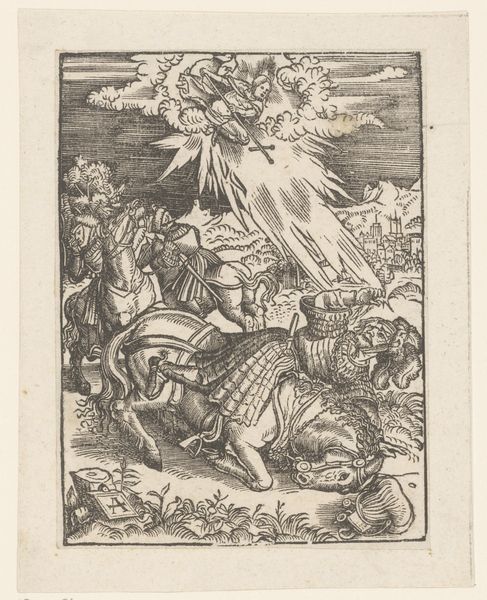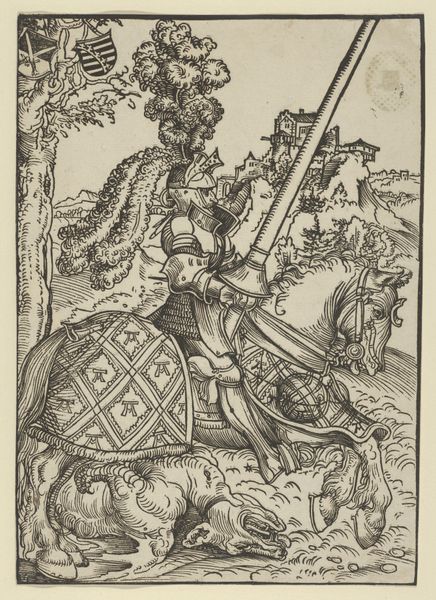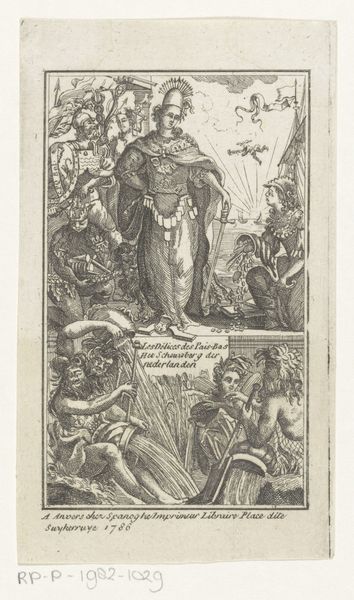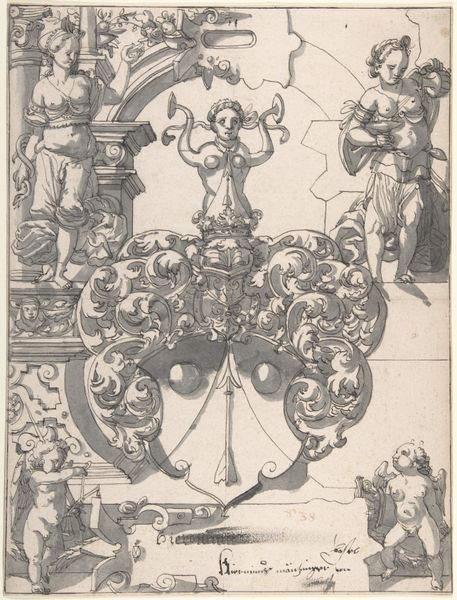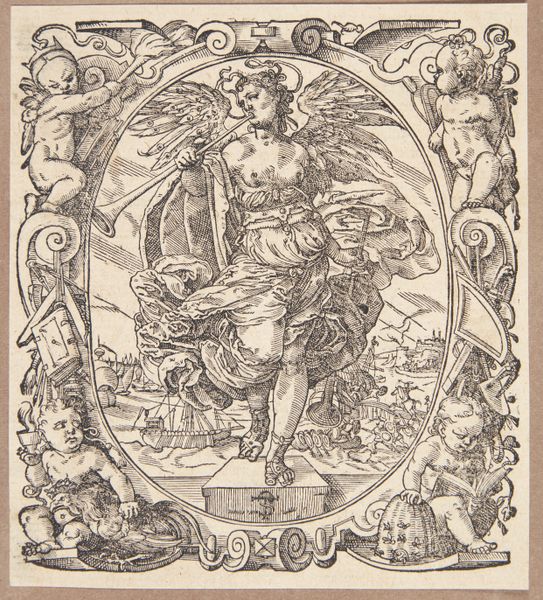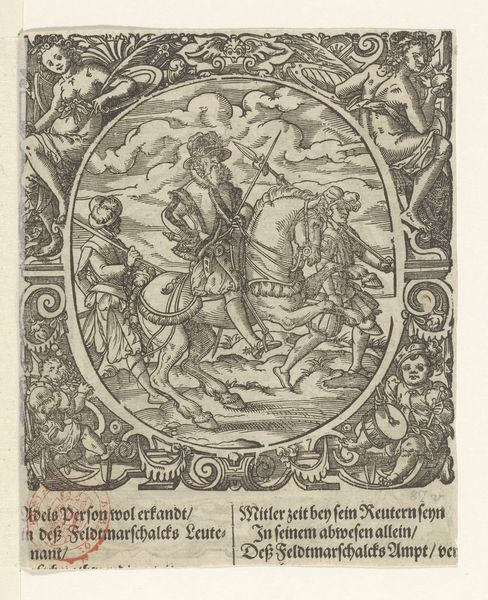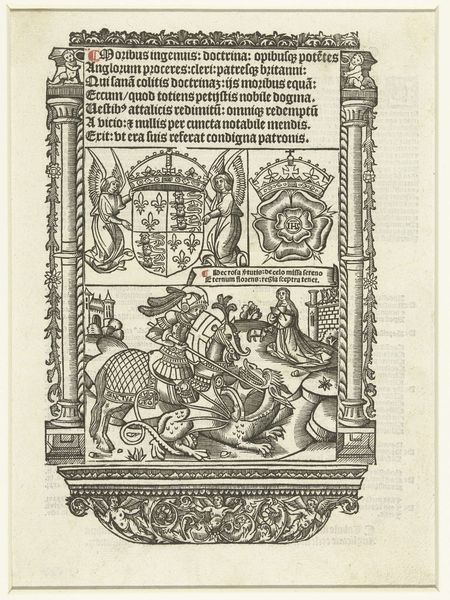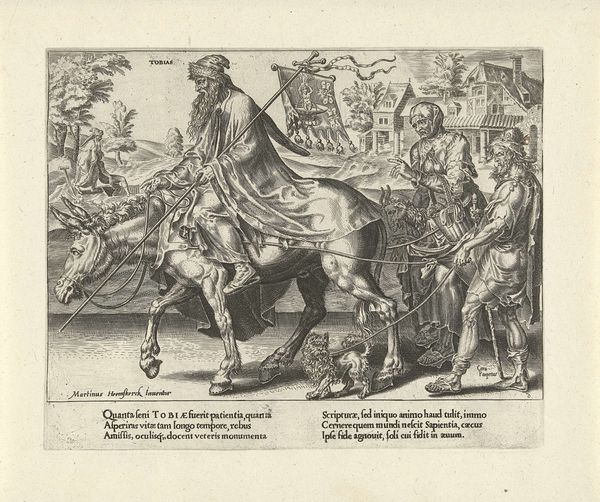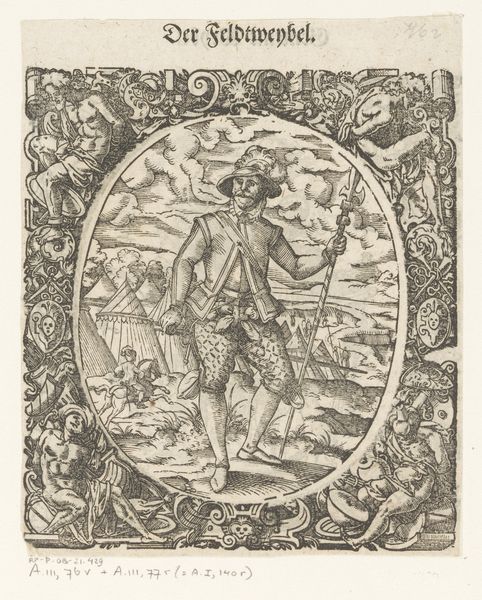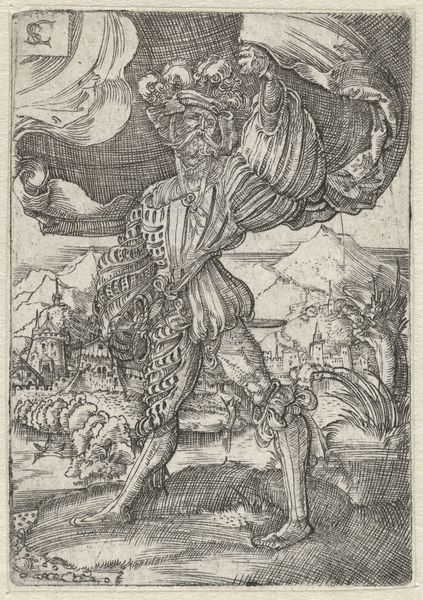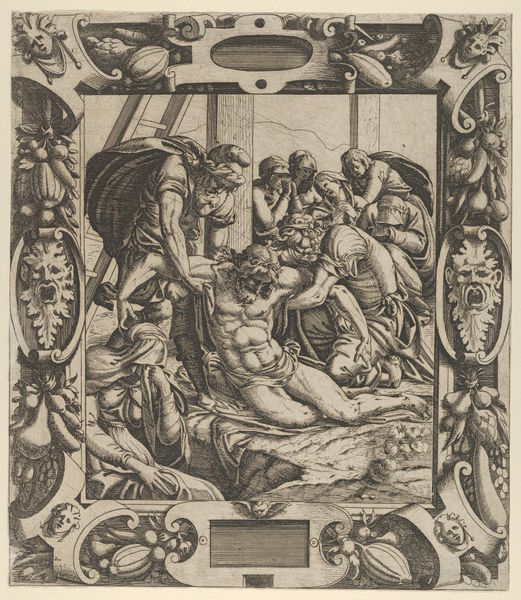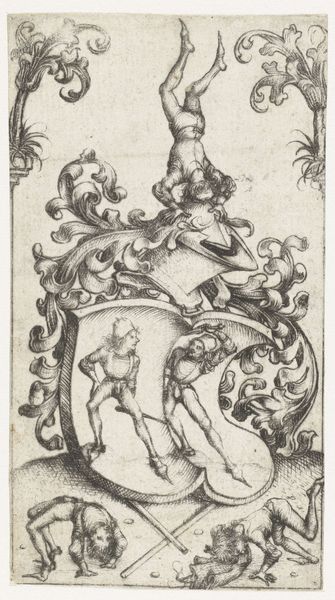
print, woodcut
#
medieval
# print
#
figuration
#
woodcut
#
line
Dimensions: 8 1/2 x 5 5/8 in. (21.59 x 14.29 cm) (plate)9 1/2 x 6 1/8 in. (24.13 x 15.56 cm) (sheet)11 15/16 x 9 1/16 in. (30.32 x 23.02 cm) (mount)18 x 14 in. (45.72 x 35.56 cm) (mat)
Copyright: Public Domain
Curator: What a striking image. This woodcut, titled "Behem," dates back to the 16th century and is attributed to James Kerver. Look closely at the density of the line work! Editor: Immediately, I’m struck by a kind of rigid power conveyed here, but it feels… awkward? Like forced power, in a way. The figure's posture seems stiff, and the lion above him is rather ornate but strangely disengaged. Curator: Indeed, the figure is rather commanding, holding what appears to be a banner and an assertive stance. In terms of symbolic significance, think about the lion – frequently representing strength, royalty, and courage. Placed above the figure, one might read that as a cultural or national aspiration. Given the work's age, we must place this imagery within the context of the prevalent sociopolitical powers of its time. Editor: Precisely, this rigidity of pose also makes me think about performative masculinity, a cultural script. The sword at his hip, those incredibly puffy sleeves... I find myself wondering who "Behem" was meant to be. Who might have owned this print? Was it aspirational? Satirical, perhaps? Curator: Now that you mention it, I do wonder how accessible this would have been to the public then. I think we can safely infer this would have appealed to members of a ruling class with their associated tastes. In any case, this object, a woodcut print, enabled broader distribution, democratizing imagery more efficiently. Even within this seemingly straightforward, illustrative context, this piece sparks multiple interpretative pathways that can be teased out when considering cultural meanings assigned through figuration and how the style helps transmit those narratives. Editor: Yes! The multiplication of images – this makes these sorts of political ideas incredibly potent in society. We can imagine how such art becomes implicated in establishing, as you said, cultural identities or social position, particularly in those very volatile periods of the 16th century. Curator: Ultimately, contemplating "Behem," we encounter how the interplay of power, representation, and visual culture shapes our perceptions. And with such detailed work, and cultural significance in mind, it prompts vital reflections concerning not just the aesthetics, but their enduring echoes, too. Editor: Exactly! By focusing on works like “Behem,” it unveils how cultural and individual identities were – and still are – being fashioned and promoted. And who, precisely, controls these representational strategies!
Comments
No comments
Be the first to comment and join the conversation on the ultimate creative platform.
